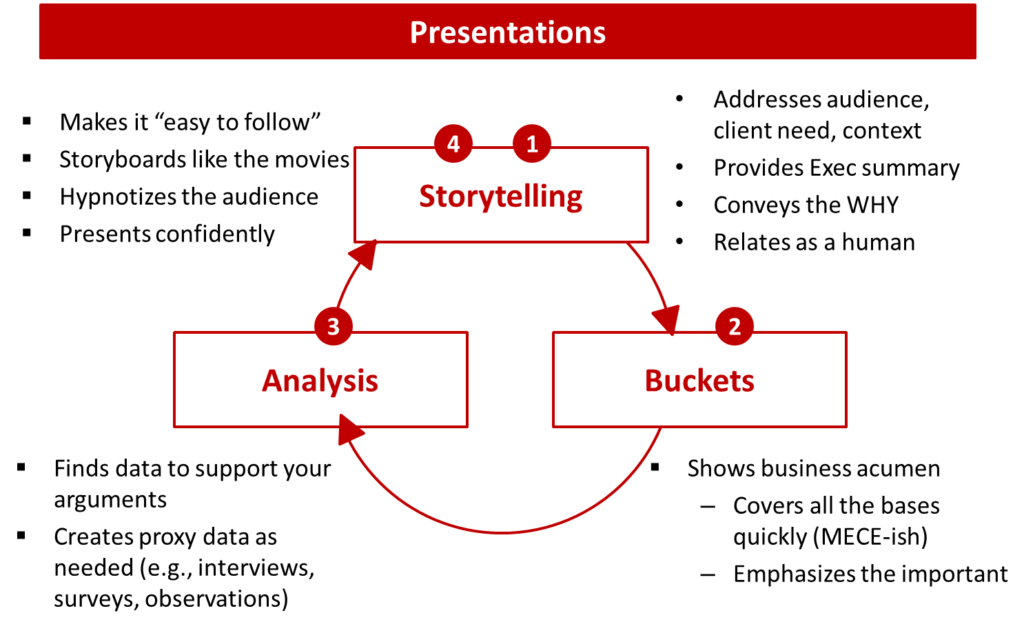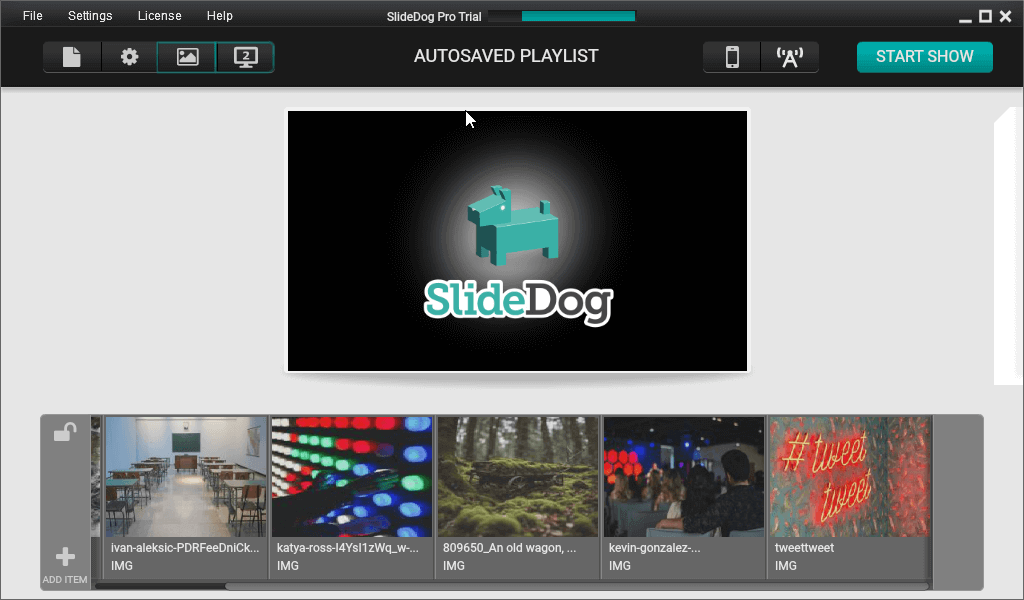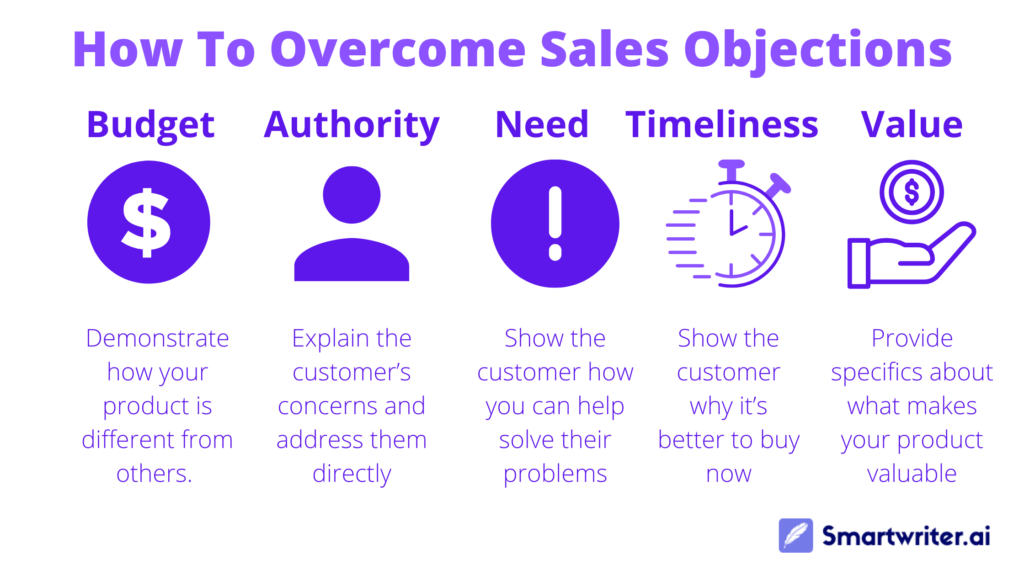The Most Effective Sales Presentation Tips & Techniques
Selling is difficult, but sales presentations can help. This article demystifies the art of creating a winning sales presentation that connects with your customers and increases your revenue.
Dag Hendrik Lerdal

Selling is difficult, but one of the most effective tools sales reps have in their back pocket is the sales presentation. When done right, it’s the key to landing more deals and generating higher revenue for your business.
However, it takes more than throwing together a couple of PowerPoint slides and calling it a day. It requires compelling content and engaging delivery to close the deal.
In this article, we will demystify the art of creating a winning sales presentation that connects with your customers and ultimately drives more sales.
Understanding Sales Presentations
Before we get into what makes a sales presentation “good,” let’s first make sure we’re on the same page about what a sales presentation is. At its core, a sales presentation is a meeting between your sales team and the key stakeholders of your target client company.
The ultimate goal is to convince them that your product/service is the best solution for their business needs. This means you need a clear understanding of their business challenges, solutions, and goals.
What sets a sales presentation apart from a typical sales pitch is the scope and resource requirement.
Sales presentations are usually geared toward going after big-ticket deals and generally have multiple stakeholders that will have the final say. Also, sales presentations will often have a product/service demo so the target customer can see your offering in action.
With so much on the line and so much to gain, a sales presentation also requires more time, money, and effort in preparing and planning to make sure everything goes smoothly.
What Makes a Winning Sales Presentation?
Beyond the speech and visuals, there are five core components that elevate a sales presentation from “nay” to “yay.” These five elements include:
1. Doing Your Homework
Knowledge is power, and it’s even more true when it comes to creating a sales presentation that actually closes deals. You need to clearly understand what challenges and pain points concern your prospects. Then, you can tailor your sales presentation to present how your solution adds value and helps them address these issues.
It requires you to do extensive research into your target company and their industry:
- What unique challenges do they face?
- What are some issues they might have to deal with later?
- How can you help them become more competitive?
By digging deep, you can provide a custom solution that can ultimately get them on board.
2. Telling a Story
Use the art of storytelling to your advantage. Stories are a great tool for helping your prospects visualize and internalize how your solution will work for them. Of course, that doesn’t mean you need to be Stephen King – you can rely on anecdotes from real clients.
However, make sure to keep your story concise and focus on the key points. Showing the real-world potential of your offering carries more weight and helps your prospect see its value.
I love this breakdown by Consultant’s Mind:

3. Highlighting the Value Proposition
Yes, your product has X awesome features and can do this and that. But honestly, your prospect doesn’t care about those. They want to hear what your product can do for them.
How is it going to solve their problems? How will it make their life easier?
That’s what you want the core of your sales presentation to answer. It doesn’t need to be overly complicated, either.
You can simply say, “[Product X] will help [Company A] solve [Pain Point 1] and [Pain Point 2] by doing [Benefit 1], [Benefit 2], and [Benefit 3].”
4. Providing Credibility in Your Sales Presentation
Of course, you can’t just say, “X will do Y,” without having proof to back up your claim. That’s where social proof and data come into play.
Leverage past happy clients to give testimonials to show your product/service provides tangible benefits.
You can also use research data such as statistics, quotes from experts, and product comparisons to give your presentation more weight. For example, saying “X can cut downtime by X%” is more actionable than “Y saves you time.”
5. Including a CTA
Finally, your sales presentation needs a call to action. A CTA pushes the prospect to make the next move by telling them what they should do. It can be contacting you for more info, signing up for a demo, making a purchase, and anything similar.
The goal is to make sure the prospect has a clear idea of what they need to do to move things forward.
13 Effective Sales Presentation Tips & Techniques
Now, let’s move into the meat and potatoes of this article: 13 actionable tips and tricks you can implement into your next sales presentation.
1. Presenting with Confidence in Sales
In the sales world, confidence speaks volumes. No one wants to be stuck dealing with a boring presentation. Plus, when your voice is shaky, and you’re stumbling over words, it puts you and your company in a bad light.
So, how do you deliver your presentation confidently? The key is being well-prepared and knowing your stuff. You need to know your sales material and product like the back of your hand. We recommend practicing your sales presentation as much as you can.
If you want to test yourself, do your presentation without using any of your slides. If you can do that, then you can be confident you can knock it out of the park when it’s go-time.
2. The Five-Second Rule
While sales presentations are considerably longer than a typical sales pitch, the five-second rule still applies. In the digital age, where attention is a commodity, you have around five seconds to capture your target’s attention.
That means the first few words of your presentation need to be impactful. Try opening up with a shocking industry stat like, “Did you know X costs businesses like yours millions every year?”
Whatever you do, remember to make it relevant to your prospect and their goals or challenges. Once you have them on the hook, you can then guide them to the key aspects of your presentation and how your offering is the right fit for them.
3. Leverage Technology like SlideDog in Your Sales Presentations

Gone are the days of boring PowerPoints and WordArt. Take advantage of tools like SlideDog to kick your sales presentation into high gear.
With SlideDog, you can combine all of your sales materials and assets into a powerful, engaging presentation to really wow your prospects.
SlideDog is especially helpful when you need to hop between slides and other assets like your website or SaaS product during the presentation. It’s also great when there are multiple sales reps that need to speak because you can seamlessly swap between their presentation media.
Try SlideDog today for free on Windows and turn your presentations into multimedia experiences!
4. Make Sure You Sound, Look, and Act the Part During Your Sales Presentation
Depending on your prospect, your attire, jargon, and attitude needs to match what your audience will expect.
If you’re dealing with CEOs, CFOs, and other executives, then business wear and a professional tone is probably the right choice. If you’re presenting to tech bros in a more casual environment, then your presentation should reflect that.
When you take this approach, it builds trust and shows that you truly understand them and their industry.
Of course, you don’t need to do it all yourself. Rely on your teammates and their expertise in different areas to create a presentation that connects with each individual in your audience.
As an added bonus, swapping between presenters keeps things fresh and engaging for the audience.
5. Learn to Handle Objections
Objection handling is a core skill every salesperson needs to learn. There are common objections that pop up, regardless of what you’re selling.
Typically, prospects have objections that fall into one of four categories:
- Price
- Need
- Trust
- Urgency/time
Your goal is to understand your prospect’s reasons for their objections and respond accordingly.
By using past objections from clients and a deep understanding of the industry, you can frame your sales presentation to pre-emptively address these concerns. Just check out this example from Smartwriter:

6. Physically Demo Your Product/Service
Actions speak louder than words, and you should apply this principle to your sales presentation. Providing physical demonstrations gives your audience a real-world example of what your product can do, and they can more easily envision themselves using it.
Plus, it adds a bit of interactivity to your presentation. It also gives your audience a chance to ask pertinent questions during the demo. This is also a great place to throw in examples of how your product/service has helped previous and current clients.
If you have a tablet or other devices you can share with your audience, it’s an opportunity for them to get hands-on experience with your offering.
7. Make Your Presentation Flow
Your presentation needs a logical and seamless flow as you transition between slides and key points.
First, verbal transitions are a must – in fact, I just used two examples with “first” and “in fact.” There are a plethora of transitions you probably learned in school, such as “conversely,” “furthermore,” and “therefore,” to name a few.
However, more advanced transition strategies involve using your body language, speech cadence, emphasis, visual aids, and questions to make it easier for prospects to follow along and understand how everything connects together.
8. Ensure Key Decision-Makers & Stakeholders are Involved
The last thing you want to hear after giving a kickass presentation is, “Let me speak with the district manager and get back to you.”
Make sure the key stakeholders and the person who can say “yes” are at your sales presentation.
On that same note, you want all of them to get hands-on experience with your product/service. Get them involved because when they can picture in their mind how easy your product is to use or how it resolves their issues, it makes it much easier for them to sign off on it.
9. Don’t Be Afraid to Ask for the Deal
After you’ve given your stellar presentation and the customer understands how and why your product benefits them, simply ask them if they are ready to move forward.
There are many different approaches you can take when asking for a sale. You can use FOMO or “fear of missing out,” which plays on the prospect’s emotion of missing out on a good deal or letting their competition get ahead.
Or you can use an analytical approach where you lay out the pros and cons of your solution. Another method is sweetening the deal with a now-or-never discount or freebie.
There are a ton of different close tactics you can use, so find one that will work best for this particular prospect.
9. Don’t Take the First No for the Final Answer
The best salespeople know that it takes two, three, or more tries to close a deal. If you’ve tried to close the deal and got hit with an objection (see tip 5), then give a thoughtful response and follow up with your attempt to close the deal again.
You might need to wait a while. In this case, work on building your relationship and rapport with the prospect.
That way, when they are ready to pull the trigger, you and your product will be the first solution that comes to mind.
10. Keep Your Presentation Tight and Concise
You don’t want to waste your audience’s time, especially when speaking to executives. Make sure your presentation gets straight to the point. Every word, slide, and media should have a clear point and reason for being there. Even your pauses need to be impactful and poignant.
That’s where practicing and rehearsing your presentation is paramount. You can better control the tempo when you know your presentation inside and out. Create an outline and write out the key points you want your prospects to understand.
In your initial meeting and setting up the presentation time, take notes so you have a clear understanding of what your prospects need to know.
11. Own Your Presentation
You need to take the lead and exude confidence during your presentation. Yes, that sounds like a no-brainer since you’re the one giving the presentation.
You don’t want to say “sorry” or “I apologize,” even if it’s warranted.
For example, if your slides aren’t showing properly, don’t say, “I’m sorry for the technical issues.”
Instead, you say, “I will be starting the presentation shortly.”
Another point to keep in mind is to stay away from the ums and uhs in your speech. Not only is it unprofessional, but it gives the impression that you aren’t confident in what you have to say.
Finally, don’t tell your audience what you “think”; tell them what you know. You know your product will solve their problems. You know what benefits your service has to offer.
12. Leave a Lasting Impression
Make your presentation memorable. That doesn’t mean you should expect your audience to remember every minute detail. However, there are things you can do to make sure the key points stay in their mind long after your presentation is over.
One tactic is to use repetition. The details, benefits, and solutions you want them to retain should be mentioned 3 or more times. When Steve Jobs introduced the iPad 2, his presentation repeated the idea of “thinner, faster, lighter.”
Another strategy is the visual aids you use throughout your presentation that revolve around your key points. People hold images in their minds more easily than complex ideas.
Finally, you can use text formatting in your slides to highlight what you want your audience to walk away with. This includes bullet points or bolding and underlining keywords that make those pop out.
13. Expect (and Prepare for) the Unexpected
Lastly, our last tip is to understand that you can’t prepare for every eventuality – but you give yourself a better chance for success by expecting and respecting the unexpected.
There might be technical issues. You might get asked tough questions you aren’t ready for. However, the best presenters roll with the punch and come out swinging.
If you take to heart all of the previous tips, you will be ready to face any challenges that pop up during your presentation.
Wrapping up
Sales presentations can be difficult to master, but when you get them right, they unlock a treasure trove of opportunity. Remember, a successful presentation starts well before you’re in the room, with your slides behind you and your prospects in front.
Be confident, do your research, and take advantage of tools like SlideDog to elevate your presentation to the next level.
And with these tips and techniques in your arsenal, you’re ready to have a successful and fruitful quarter. Happy presenting!

